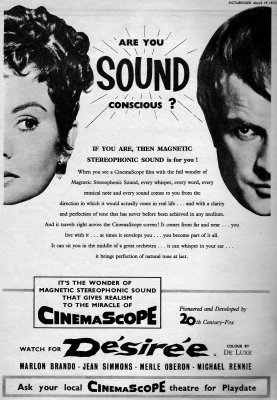Professor Echo
Senior HTF Member
Yes, it may be ONE of the answers, but I know for a fact it's not the ONLY answer that TCM can provide. I was a regular contributor on their message boards for years and their reps often came on to explain and expound upon why certain titles were shown the way they were. I also worked for years with their sister company, the now defunct TURNER PICTURES WORLDWIDE, and I can tell you that there are fascinating stories about what goes on in the programming of TCM and what is aired and why. There are lots of reasons why some widescreen movies presented by TCM are full screen and the reps on their message boards can explain it more than some people in this forum.Robert Crawford said:The answer I gave you is one of those answers made by TCM reps as obviously all areas of that company are not necessarily on the same page.







